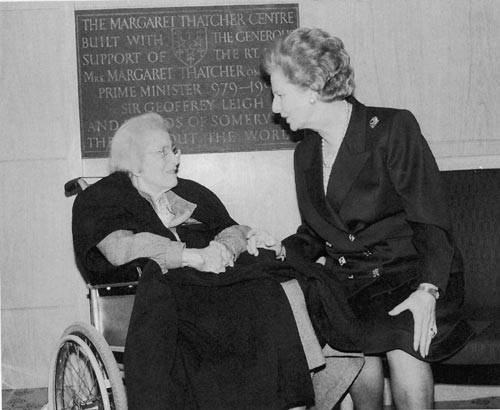
This Article From Issue
March-April 2001
Volume 89, Number 2
DOI: 10.1511/2001.18.0
Dorothy Hodgkin: A Life. Georgina Ferry. vi + 423 pp. Cold Spring Harbor Laboratory Press (first published in Great Britain by Granta Books, 1998). $25.
You may remember Dorothy Crowfoot Hodgkin: She was the British crystallographer who worked on the structure of large proteins—including penicillin, vitamin B12 and insulin—while teaching at the University of Oxford, bringing up three children, suffering from severe arthritis, becoming a Fellow of the Royal Society, winning the Nobel Prize and the Order of Merit, working for international disarmament and serving as president of the Pugwash Conferences on Science and World Affairs. As Georgina Ferry's excellent biography describes, she did all this and very much more.
Born in 1910 into an expatriate English family, Dorothy Crowfoot was the oldest of four girls. While her parents spent time studying Byzantine archaeology, first in Cairo and then Khartoum, she and her sisters were farmed out to various family members and friends in England for the school year. During the holidays they joined their parents to help excavate ancient ruins, meet British and foreign intellectuals, dine with sheiks and diplomats, and generally explore the ancient world.
After a successful undergraduate career at Somerville College at Oxford, she was accepted as a graduate student in the x-ray crystallography laboratory of John Desmond Bernal at the University of Cambridge. Bernal was widely known as a brilliant scientist and a passionate political activist, even in a prewar Cambridge community well stocked with both. Two years of challenging but rewarding work in the stimulating environment of his laboratory proved to be an enormously valuable experience for her. Although she gently ended a romantic relationship with him at about the time she met her future husband (in 1937), she and Bernal shared a deep bond for the rest of their lives.
The young chemist returned to Oxford to teach in 1934, and in tiny, entirely unsuitable rooms there began the phenomenally difficult task of solving the structure of large proteins. She was married in 1937. The following year, at age 28, Hodgkin was diagnosed with a crippling case of rheumatoid arthritis that deformed her hands and brought her tremendous pain for the remainder of her life. Nonetheless she carried on, and her success in using x-ray techniques to identify details of complex protein structures led to her election to the Royal Society at the age of 37 and to her selection for the 1964 Nobel Prize in Chemistry.
With Thomas Hodgkin she had three children. Her husband was seldom home and lived abroad for most of their married life. Even so, the Hodgkins maintained a chaotic but happy home beloved of their students and foreign visitors. Linus Pauling was once invited to dinner only to meet Dorothy running out the door to pick up her husband at the airport. She suggested that Pauling and the other guests just help themselves from the cooker.
In later life, Hodgkin used her fame and influence to work for international cooperation in science and disarmament. Never strongly doctrinaire, she relied on carefully nurtured personal relationships to bring about change. She patiently seeded the developing world with students trained in her laboratory, many of whom have since become scientific and political leaders.

From Dorothy Hodgkin
One Somerville student who briefly studied in her laboratory was Margaret Thatcher, Britain's prime minister from 1979 to 1990. In 1983, undaunted by Thatcher's "evil empire" rhetoric, Hodgkin used an invitation to lunch with her former pupil to advocate a more open relationship with Russia. Referring to this occasion, Thatcher commented to Ferry that "We just took a different view and we both knew it: she couldn't dissuade me and I couldn't dissuade her." Several years later, when Russian x-ray crystallographers were given a tour of Thatcher's official residence, they were astounded to see a portrait of their Dorothy hanging over the prime minister's desk.
Hodgkin was wary of would-be biographers, referring to the efforts that she knew of as "attempts on my life." But she might have approved of Ferry's account, which is warm, balanced, carefully researched, and written in a clear and unobtrusive style. Many readers of this biography may be inspired to follow Thatcher's lead by hanging a portrait of this remarkable scientist and humanitarian near their desks.—Linda Schmalbeck, The Shodor Education Foundation, Durham, North Carolina
American Scientist Comments and Discussion
To discuss our articles or comment on them, please share them and tag American Scientist on social media platforms. Here are links to our profiles on Twitter, Facebook, and LinkedIn.
If we re-share your post, we will moderate comments/discussion following our comments policy.